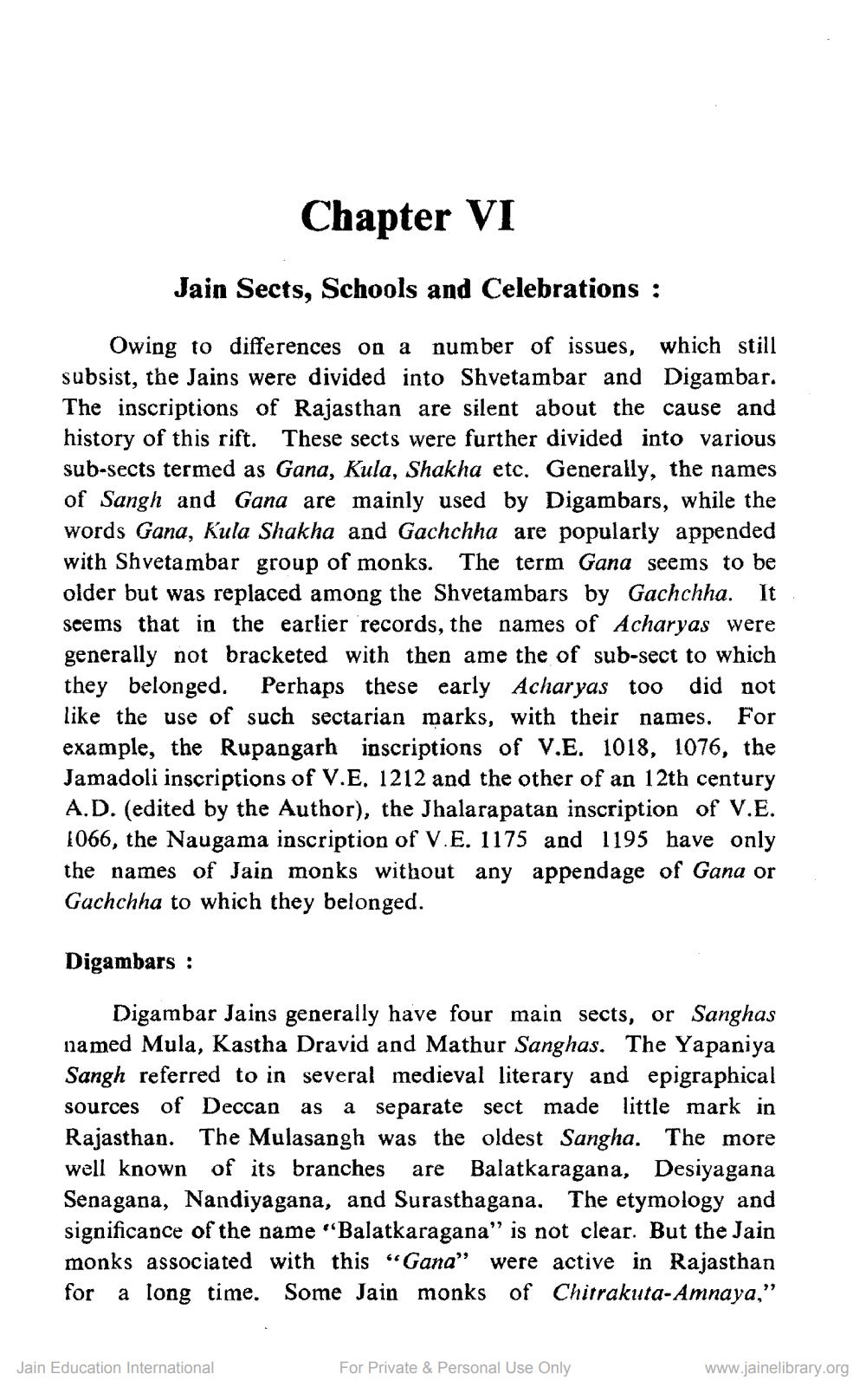________________
Chapter VI
Jain Sects, Schools and Celebrations :
Owing to differences on a number of issues, which still subsist, the Jains were divided into Shvetambar and Digambar. The inscriptions of Rajasthan are silent about the cause and history of this rift. These sects were further divided into various sub-sects termed as Gana, Kula, Shakha etc. Generally, the names of Sangh and Gana are mainly used by Digambars, while the words Gana, Kula Shakha and Gachchha are popularly appended with Shvetambar group of monks. The term Gana seems to be older but was replaced among the Shvetambars by Gachchha. It seems that in the earlier records, the names of Acharyas were generally not bracketed with then ame the of sub-sect to which they belonged. Perhaps these early Acharyas too did not like the use of such sectarian marks, with their names. For example, the Rupangarh inscriptions of V.E. 1018, 1076, the Jamadoli inscriptions of V.E. 1212 and the other of an 12th century A.D. (edited by the Author), the Jhalarapatan inscription of V.E. 1066, the Naugama inscription of V.E. 1175 and 1195 have only the names of Jain monks without any appendage of Gana or Gachchha to which they belonged.
Digambars :
Digambar Jains generally have four main sects, or Sanghas named Mula, Kastha Dravid and Mathur Sanghas. The Yapaniya Sangh referred to in several medieval literary and epigraphical sources of Deccan as a separate sect made little mark in Rajasthan. The Mulasangh was the oldest Sangha. The more well known of its branches are Balatkaragana, Desiyagana Senagana, Nandiyagana, and Surasthagana. The etymology and significance of the name "Balatkaragana" is not clear. But the Jain monks associated with this “Gana" were active in Rajasthan for a long time. Some Jain monks of Chitrakuta- Amnaya,"
Jain Education International
For Private & Personal Use Only
www.jainelibrary.org




